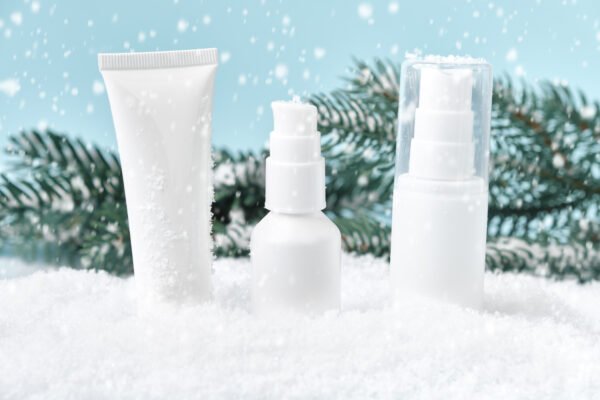Introduction
In skincare, one size doesn’t fit everyone. Finding equilibrium for combination oily skin may be a minefield. The T-zone—the forehead, nose, and chin—is oily, whereas the rest is dry or normal. This rare skin type requires a unique approach to please both parties.
Practical skincare advice for combination oily skin is provided here. This book will assist beauty lovers, skincare beginners, and dermatological trend followers in maintaining their skin. We’ll help you choose products, find your skin type, and build a healthy skincare routine.
Understanding Combination Oily Skin
Understanding combination oily skin is crucial. This skin type features greasy and dry face skin. Hyperactive sebaceous glands make the T-zone oilier at the forehead, nose, and chin. Cheek skin may be dry and sebum-free.
Many skincare enthusiasts face mixed skin. Dual strategies are required to satisfy each area. Understanding your skin’s behavior helps you match your routine and products.
Starting with your skin type is critical to excellence. See whether your T-zone glows hours after washing. For combination oily skin, cheeks may feel tight or flaky. Knowing this aids in skincare selection.
The Importance of Proper Cleansing
Cleansing is essential for combination oily skin. Remove oil, dirt, and impurities that clog pores and cause rashes. Selecting cleaning is necessary. Use gentle, sulfate-free, non-drying cleaners.
Clean your oily face with lukewarm water. Scrubbing may grease and irritate the skin, so safe cleaning requires gentle circles.
Consistency is important. Face cleaning morning and night is advised. It cleans and preps the face for skincare. Cleansing is essential for combination oily skin. It removes oil, dirt, and impurities that clog pores and cause rashes. Selecting cleaning is necessary. Use gentle, sulfate-free, non-drying cleaners.
Clean your oily face with lukewarm water. Scrubbing may grease and irritate the skin, so safe cleaning requires gentle circles.
Consistency is important. It is advised to clean the face morning and night. This preps the face for skincare.
Exfoliating to Maintain Balance
Dead cells may dull skin and clog pores. Exfoliation eliminates. Combining oily skin may maintain balance by exfoliating 1-2 times weekly. The selection of an exfoliator is critical.
Light chemical exfoliants like salicylic or lactic acids may penetrate pores and reduce oil production. They are usually better than physical exfoliants, which might aggravate mixed skin.
Moderation matters. Exfoliating too much might dry your skin and raise T-zone oil. Balance your routine for beautiful skin.
Hydration is Key
Despite common opinion, oily skin requires water. Lack of moisture might cause your skin to produce more oil to compensate. Finding the proper moisturizer for combination oily skin is crucial.
Hydrate without feeling greasy with lightweight, oil-free moisturizers. Hyaluronic acid and glycerin are beneficial because they moisturize without oil.
Apply moisturizer after cleansing and exfoliating to seal in moisture. To balance your face, apply minimally to the T-zone and focus on the drier regions.
Sunscreen is Essential
Sunscreen is essential for any skincare program. However, combination oily skin needs a sunscreen that doesn’t add oil. Choose lightweight, non-comedogenic sunscreens for oily or mixed skin.
Gel—or water-based sunscreens are great because they protect without feeling oily. Apply sunscreen daily as the last step in your skincare regimen to protect against UV radiation.
If you are outside for long periods, reapply sunscreen every two hours. Sun protection is essential for skin health and beauty.
Spot Treatment for Breakouts
Many combinations of skinned people have breakouts. These flare-ups may be managed with spot therapy without disturbing your skincare regimen. Look for acne-fighting benzoyl peroxide or salicylic acid treatments.
Apply spot therapy solely to afflicted areas to reduce irritation. Overusing these items might cause dryness or peeling.
Use spot treatments at night to let the active ingredients work. Early outbreak treatment may avoid further damage.
Choosing the Right Products
Managing combination oily skin requires appropriate skincare products. Choose elements that balance oil production and hydrate skin. Choose cleansers with tea tree oil or niacinamide to manage sebum without drying.
Serums containing vitamin C or niacinamide brighten and enhance skin texture. These minimize pores and even skin tone.
Before using new products, patch test for skin compatibility. Introduce new products slowly to prevent skin overload.
Makeup Tips for Combination Oily Skin
Applying makeup to combination oily skin requires strategy. Start with a mattifying primer to reduce T-zone shine and smooth foundation application.
Choose matte oil-free foundations to avoid noon shine. Powder foundations are good since they don’t raise skin oil.
A translucent powder will keep your makeup in place all day. Blotting sheets absorb oil without ruining makeup throughout the day.
DIY Masks for Combination Skin
Homemade face masks may enhance your skincare regimen. A soothing mask with oats and yogurt may moisturize dry skin and regulate T-zone oil.
You may also use clay masks to clean and remove pollutants and grease thoroughly. Avoid drying out your skin by applying solely to greasy areas.
Maintain skin balance gently with these masks once a week. They’re affordable and customizable for your skin.
Building a Consistent Routine
Effective skincare, particularly for combination oily skin, requires consistency. Make a long-term program and tweak it as your skin responds.
Start with washing, moisturizing, and sun protection, then add exfoliants and masks. Monitor your skin’s reaction to new products and make modifications.
By sticking to a program, your skin may adapt and improve, resulting in healthier, more balanced skin.
Common Mistakes to Avoid
Avoid these mistakes while caring for combination oily skin. Overwashing may deplete skin oils, increasing oil production. Maintain equilibrium with twice-daily cleaning.
Avoid oily, heavy products that clog pores and make the T-zone greasy. Choose lightweight, non-comedogenic products for combination and oily skin.
Finally, stay hydrated. Lack of moisture might cause your skin to produce extra oil to compensate.
The Importance of Exfoliation
Exfoliation helps eliminate dead skin cells that clog pores and cause breakouts in combination with oily skin. Exfoliate 1-2 times a week using a light chemical exfoliator containing alpha or beta hydroxy acids (AHAs or BHAs) to remove impurities without being abrasive. Regular exfoliation increases cell turnover for smoother, brighter skin.
Hydration and Diet
It’s essential to eat a varied diet for healthy skin. Eating things high in water, like fruits and veggies, can help you stay hydrated from the inside out. Omega-3 fatty acids in flaxseeds, fish, and walnuts can also help lower swelling and make skin feel better. Staying hydrated and eating well helps produce a healthy glow and proper oil production.
Seasonal Skincare Adjustments
Every season changes what your face needs. Lighter products may work better during the warmer months, but heavier moisturizers may be required during the colder months to keep your skin from getting dry. Watch how your skin responds to changes in weather and make changes to your routine and products as needed to keep your skin balanced all year.
Professional Treatments
If you want more excellent skin care options, you might want to look into skilled services. Facials for mixed or oily skin offer personalized care that helps with problems like clogged pores and uneven texture. Under the supervision of a skincare professional, treatments like chemical peels or microdermabrasion can also provide deeper cleansing, which can help improve skin tone and clarity.
Conclusion
Combining oily skin is unique, but with the appropriate technique, it’s controllable. Understanding your skin’s demands and following a balanced regimen may provide harmony and vigor. Remember that skincare is personal; what works for you may not work for others.
Curiosity and patience can help you understand combination oily skin and reap its advantages. For further information, consult skincare experts or customized resources. Go for your skincare goals!
—is









